Siem Reap, located in northwestern Cambodia, serves as a crucial entry point to the iconic Angkor Wat temple complex, a UNESCO World Heritage Site. This vibrant city, with a population of over 200,000, has transformed significantly from its humble beginnings as a small village to a prominent tourist hub. The name “Siem Reap” translates to “Defeat of Siam,” reflecting a historical context that dates back to conflicts with the neighboring kingdom of Siam (now Thailand).
Over the years, Siem Reap has grown into an essential cultural and economic center, attracting millions of visitors each year. The city’s geographical location, just a few kilometers away from the majestic Angkor Wat and other historical sites, makes it a prime destination for travelers seeking to immerse themselves in the rich history of the Khmer Empire. The architecture, featuring uniquely carved sandstone, serves as a visual representation of Cambodia’s glorious past and spiritual heritage.
The local Khmer culture of Siem Reap is characterized by its traditional customs, vibrant markets, and delicious cuisine. Visitors can explore lively street markets, such as the Psar Chaa (Old Market), where local artisans sell handcrafted items and traditional Khmer delicacies. Additionally, the hospitality of the local people contributes significantly to the city’s charm, as residents are known for their warmth and friendliness, making tourists feel welcome and at home.
As tourism continues to flourish, Siem Reap’s economy increasingly relies on its ability to cater to diverse international visitors. The city’s infrastructure, including hotels, restaurants, and cultural experiences, has evolved to meet the demands of a growing influx of travelers. This evolution not only enhances the visitor experience but also supports local businesses and communities, helping preserve the unique cultural essence of Siem Reap.
Top Things to Do in Siem Reap
Siem Reap, Cambodia, serves as the gateway to the magnificent Angkor Wat, one of the world’s most revered archaeological sites. This UNESCO World Heritage site is a testament to the grandeur of the Khmer Empire, showcasing intricate carvings, sprawling galleries, and towering spires that speak to the architectural prowess of its builders. Visitors can spend days exploring Angkor Wat and its surrounding temples, such as Ta Prohm with its tree-clad ruins, and Bayon, recognized for its serene stone faces. Each temple offers a unique glimpse into Khmer history and culture, making them must-see attractions during your visit.
Apart from the remarkable temples, Siem Reap boasts a vibrant atmosphere filled with markets, shops, and cultural venues. The Old Market, or Psar Chaa, is the perfect place to immerse yourself in local life, where fresh produce and traditional handicrafts abound. Here, visitors can shop for souvenirs and taste authentic Khmer street food, which adds a culinary delight to the experience. For those interested in the arts, attending a traditional Apsara dance performance is highly recommended. These performances showcase Cambodia’s rich artistic heritage and offer insights into the country’s folklore.
For a hands-on experience, consider enrolling in a cooking class that emphasizes traditional Khmer cuisine. Participants can learn to prepare iconic dishes, such as Amok or Larb, while discovering the significance of local ingredients. Outdoor enthusiasts will find plenty of adventure in Siem Reap as well. Trekking through the nearby countryside or biking along scenic paths provides an opportunity to appreciate the natural beauty that surrounds the area. With an array of activities and attractions available, Siem Reap truly has something for every traveler, ensuring a well-rounded visit to this cultural gem of Cambodia.
Where to Stay in Siem Reap
Siem Reap, Cambodia, is not only renowned for its breathtaking temples, such as Angkor Wat, but also for its diverse accommodation options that cater to various budgets and preferences. Travelers seeking luxury can indulge in a stay at one of the high-end resorts nestled in close proximity to the iconic temple complex. These establishments often feature spacious villas, private pools, and an array of wellness facilities, providing guests with a serene retreat after a day of exploration.
For those who appreciate unique atmospheres, boutique hotels in Siem Reap are plentiful. Many of these charming hotels are designed with local aesthetics, showcasing traditional Cambodian architecture and art. Staying in a boutique hotel allows travelers to immerse themselves in the culture while still enjoying modern amenities, such as free Wi-Fi, on-site dining, and personalized service. Some notable boutique options are located just a short distance from Angkor Wat, making them ideal for early morning visits to the temples.
Budget-conscious travelers will find numerous hostels and guesthouses that provide a wallet-friendly alternative without compromising on comfort. These accommodations are often centrally located, making it effortless to explore Siem Reap’s vibrant markets and cafes. Many budget establishments offer dormitory-style rooms or private options, along with communal areas that foster social interaction among guests. Complimentary breakfast and laundry services are also common amenities, ensuring a convenient stay.
The variety of accommodation choices in Siem Reap ensures that all visitors can find a suitable place to unwind after a memorable day discovering Cambodia’s rich heritage. From luxurious stays to cozy retreats, the city’s hospitality sector caters to every traveler’s needs.
Savoring the Flavors of Siem Reap
Siem Reap, a vibrant city in Cambodia, is not only renowned for the majestic Angkor Wat but also for its rich and diverse culinary heritage. The local cuisine reflects the unique cultural influences and traditions of Cambodian life, making it an essential aspect of your visit. One cannot experience the essence of Siem Reap without indulging in its signature dishes, each bursting with flavors and history.
One of the must-try dishes is Amok, a traditional fish curry prepared with coconut milk, spices, and fresh herbs. This delicacy is often served with rice, showcasing the use of local ingredients and cooking methods passed down through generations. Another popular choice is Num Banh Chok, a refreshing rice noodle soup typically consumed for breakfast. This dish features a unique green curry sauce, garnished with fresh vegetables and herbs, presenting an invigorating start to the day.
For those seeking street food experiences, Siem Reap offers a plethora of options. Vendors along the bustling streets serve various snacks, such as fried insects, spring rolls, and grilled meats, providing an authentic taste of Cambodian street culture. Visiting the local markets, such as the Old Market (Psar Chas), is also essential for sampling local produce and specialties, allowing for an immersive culinary experience.
On the other end of the spectrum, Siem Reap boasts fine dining establishments where guests can savor exquisite interpretations of Khmer cuisine alongside international dishes. Restaurants like Cuisine Wat Damnak and Viroth’s offer beautifully plated meals using fresh, local ingredients and innovative techniques. These dining experiences highlight the depth and complexity of Cambodian flavors while emphasizing the importance of supporting local culinary artisans.
In conclusion, the culinary landscape of Siem Reap serves as a gateway to understanding Cambodian culture. By savoring local specialties, exploring street food, and dining at both casual and upscale restaurants, visitors can enrich their trip and create lasting memories of this cultural gem in Cambodia.
An Overview of Siem Reap
Siem Reap, located in northwestern Cambodia, serves as a crucial entry point to the iconic Angkor Wat temple complex, a UNESCO World Heritage Site. This vibrant city, with a population of over 200,000, has transformed significantly from its humble beginnings as a small village to a prominent tourist hub. The name “Siem Reap” translates to “Defeat of Siam,” reflecting a historical context that dates back to conflicts with the neighboring kingdom of Siam (now Thailand).
Over the years, Siem Reap has grown into an essential cultural and economic center, attracting millions of visitors each year. The city’s geographical location, just a few kilometers away from the majestic Angkor Wat and other historical sites, makes it a prime destination for travelers seeking to immerse themselves in the rich history of the Khmer Empire. The architecture, featuring uniquely carved sandstone, serves as a visual representation of Cambodia’s glorious past and spiritual heritage.
The local Khmer culture of Siem Reap is characterized by its traditional customs, vibrant markets, and delicious cuisine. Visitors can explore lively street markets, such as the Psar Chaa (Old Market), where local artisans sell handcrafted items and traditional Khmer delicacies. Additionally, the hospitality of the local people contributes significantly to the city’s charm, as residents are known for their warmth and friendliness, making tourists feel welcome and at home.
As tourism continues to flourish, Siem Reap’s economy increasingly relies on its ability to cater to diverse international visitors. The city’s infrastructure, including hotels, restaurants, and cultural experiences, has evolved to meet the demands of a growing influx of travelers. This evolution not only enhances the visitor experience but also supports local businesses and communities, helping preserve the unique cultural essence of Siem Reap.
Top Things to Do in Siem Reap
Siem Reap, Cambodia, serves as the gateway to the magnificent Angkor Wat, one of the world’s most revered archaeological sites. This UNESCO World Heritage site is a testament to the grandeur of the Khmer Empire, showcasing intricate carvings, sprawling galleries, and towering spires that speak to the architectural prowess of its builders. Visitors can spend days exploring Angkor Wat and its surrounding temples, such as Ta Prohm with its tree-clad ruins, and Bayon, recognized for its serene stone faces. Each temple offers a unique glimpse into Khmer history and culture, making them must-see attractions during your visit.
Apart from the remarkable temples, Siem Reap boasts a vibrant atmosphere filled with markets, shops, and cultural venues. The Old Market, or Psar Chaa, is the perfect place to immerse yourself in local life, where fresh produce and traditional handicrafts abound. Here, visitors can shop for souvenirs and taste authentic Khmer street food, which adds a culinary delight to the experience. For those interested in the arts, attending a traditional Apsara dance performance is highly recommended. These performances showcase Cambodia’s rich artistic heritage and offer insights into the country’s folklore.
For a hands-on experience, consider enrolling in a cooking class that emphasizes traditional Khmer cuisine. Participants can learn to prepare iconic dishes, such as Amok or Larb, while discovering the significance of local ingredients. Outdoor enthusiasts will find plenty of adventure in Siem Reap as well. Trekking through the nearby countryside or biking along scenic paths provides an opportunity to appreciate the natural beauty that surrounds the area. With an array of activities and attractions available, Siem Reap truly has something for every traveler, ensuring a well-rounded visit to this cultural gem of Cambodia.
Where to Stay in Siem Reap
Siem Reap, Cambodia, is not only renowned for its breathtaking temples, such as Angkor Wat, but also for its diverse accommodation options that cater to various budgets and preferences. Travelers seeking luxury can indulge in a stay at one of the high-end resorts nestled in close proximity to the iconic temple complex. These establishments often feature spacious villas, private pools, and an array of wellness facilities, providing guests with a serene retreat after a day of exploration.
For those who appreciate unique atmospheres, boutique hotels in Siem Reap are plentiful. Many of these charming hotels are designed with local aesthetics, showcasing traditional Cambodian architecture and art. Staying in a boutique hotel allows travelers to immerse themselves in the culture while still enjoying modern amenities, such as free Wi-Fi, on-site dining, and personalized service. Some notable boutique options are located just a short distance from Angkor Wat, making them ideal for early morning visits to the temples.
Budget-conscious travelers will find numerous hostels and guesthouses that provide a wallet-friendly alternative without compromising on comfort. These accommodations are often centrally located, making it effortless to explore Siem Reap’s vibrant markets and cafes. Many budget establishments offer dormitory-style rooms or private options, along with communal areas that foster social interaction among guests. Complimentary breakfast and laundry services are also common amenities, ensuring a convenient stay.
The variety of accommodation choices in Siem Reap ensures that all visitors can find a suitable place to unwind after a memorable day discovering Cambodia’s rich heritage. From luxurious stays to cozy retreats, the city’s hospitality sector caters to every traveler’s needs.
Savoring the Flavors of Siem Reap
Siem Reap, a vibrant city in Cambodia, is not only renowned for the majestic Angkor Wat but also for its rich and diverse culinary heritage. The local cuisine reflects the unique cultural influences and traditions of Cambodian life, making it an essential aspect of your visit. One cannot experience the essence of Siem Reap without indulging in its signature dishes, each bursting with flavors and history.
One of the must-try dishes is Amok, a traditional fish curry prepared with coconut milk, spices, and fresh herbs. This delicacy is often served with rice, showcasing the use of local ingredients and cooking methods passed down through generations. Another popular choice is Num Banh Chok, a refreshing rice noodle soup typically consumed for breakfast. This dish features a unique green curry sauce, garnished with fresh vegetables and herbs, presenting an invigorating start to the day.
For those seeking street food experiences, Siem Reap offers a plethora of options. Vendors along the bustling streets serve various snacks, such as fried insects, spring rolls, and grilled meats, providing an authentic taste of Cambodian street culture. Visiting the local markets, such as the Old Market (Psar Chas), is also essential for sampling local produce and specialties, allowing for an immersive culinary experience.
On the other end of the spectrum, Siem Reap boasts fine dining establishments where guests can savor exquisite interpretations of Khmer cuisine alongside international dishes. Restaurants like Cuisine Wat Damnak and Viroth’s offer beautifully plated meals using fresh, local ingredients and innovative techniques. These dining experiences highlight the depth and complexity of Cambodian flavors while emphasizing the importance of supporting local culinary artisans.
In conclusion, the culinary landscape of Siem Reap serves as a gateway to understanding Cambodian culture. By savoring local specialties, exploring street food, and dining at both casual and upscale restaurants, visitors can enrich their trip and create lasting memories of this cultural gem in Cambodia. Thanks for reading.
Thinking of visiting the Philippines? Then check out The Best Festivals in the Philippines to visit.
Also check out our online store.
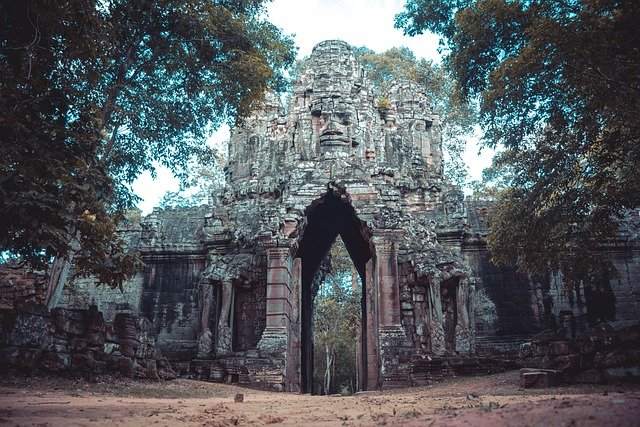
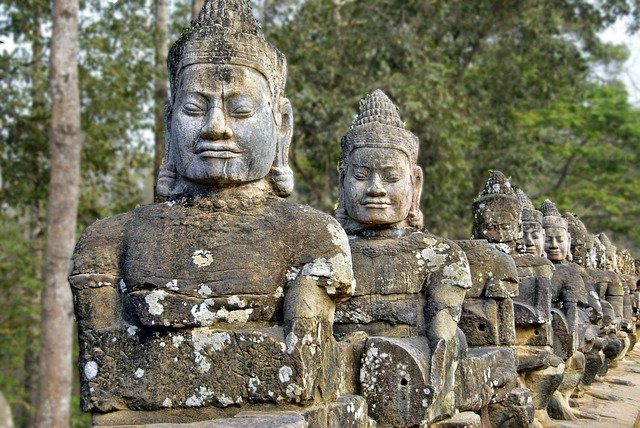
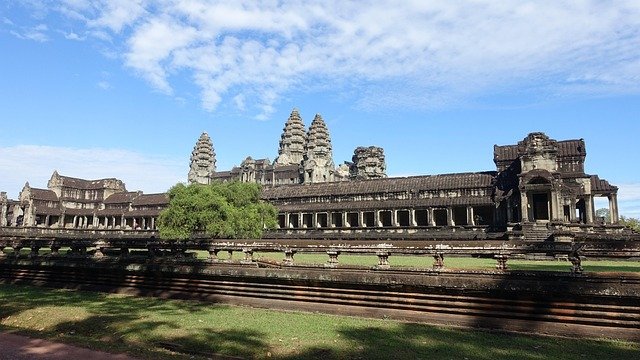
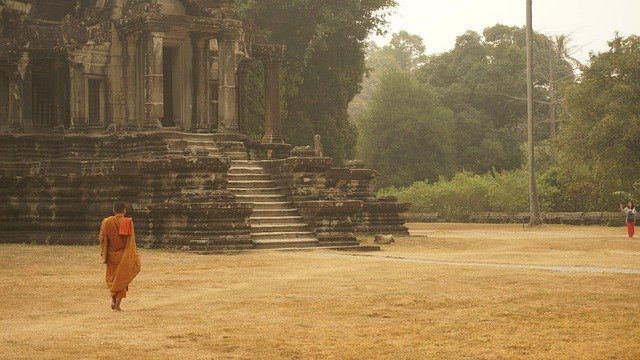
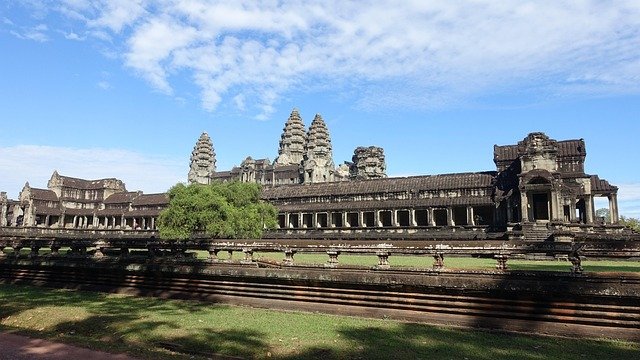
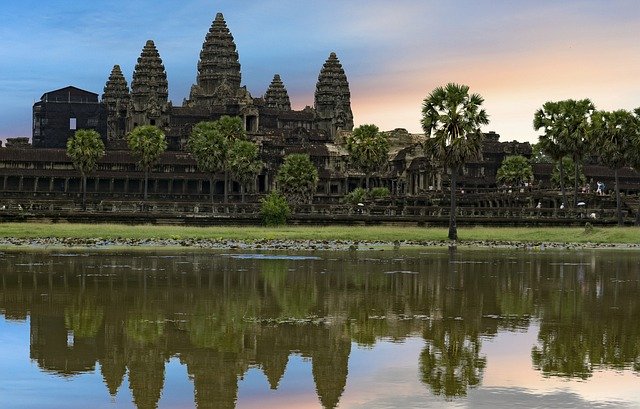

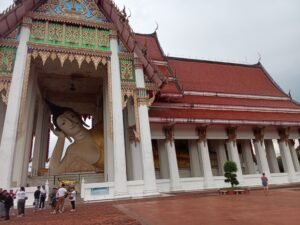


Pingback: Local Customs in Singapore: Traditions & Etiquette Guide
Pingback: How Foreigners Can Buy Property in Cambodia